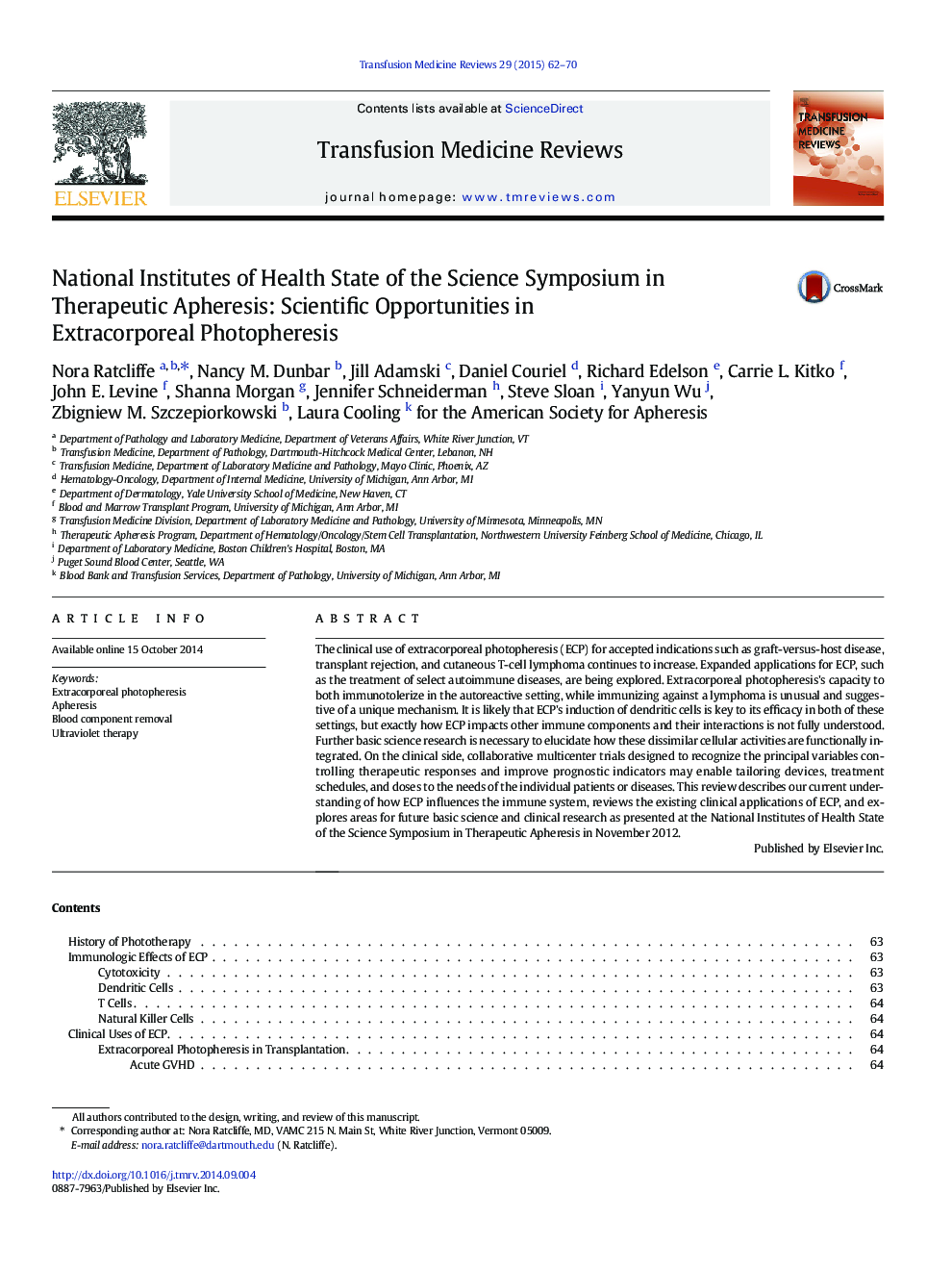| Article ID | Journal | Published Year | Pages | File Type |
|---|---|---|---|---|
| 3336649 | Transfusion Medicine Reviews | 2015 | 9 Pages |
The clinical use of extracorporeal photopheresis (ECP) for accepted indications such as graft-versus-host disease, transplant rejection, and cutaneous T-cell lymphoma continues to increase. Expanded applications for ECP, such as the treatment of select autoimmune diseases, are being explored. Extracorporeal photopheresis's capacity to both immunotolerize in the autoreactive setting, while immunizing against a lymphoma is unusual and suggestive of a unique mechanism. It is likely that ECP's induction of dendritic cells is key to its efficacy in both of these settings, but exactly how ECP impacts other immune components and their interactions is not fully understood. Further basic science research is necessary to elucidate how these dissimilar cellular activities are functionally integrated. On the clinical side, collaborative multicenter trials designed to recognize the principal variables controlling therapeutic responses and improve prognostic indicators may enable tailoring devices, treatment schedules, and doses to the needs of the individual patients or diseases. This review describes our current understanding of how ECP influences the immune system, reviews the existing clinical applications of ECP, and explores areas for future basic science and clinical research as presented at the National Institutes of Health State of the Science Symposium in Therapeutic Apheresis in November 2012.
